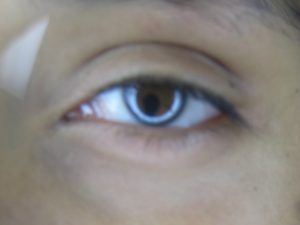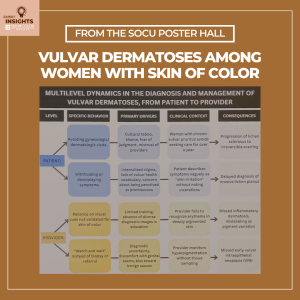Correct Answer: A. X-ray demonstrating osteopathia striata
Explanation: The patient has features of focal dermal hypoplasia (Goltz syndrome). An X-linked dominant condition (gene: PORCN) with reticular, blaschkoid or linear thinned dermis, ulcerations, paillomas, pigmentation anomalies as well as ecodermal anomalies such as sparse hair, thin nails and hypodontia. Patients also have digit anomalies including ectrodactyly (split-hand/foot or “lobster-claw” malformation), ocular colobomas (seen here), and microphthamia (small eyes). Diagnosis may be made clinically or by X-ray demonstrating osteopathia striata that is more commonly seen in mid portion of lower extremities. Osteopoikolosis is seen on X-ray in Buschke-Ollendorff syndrome. pseudoxanthoma elasticum has calcified elastic tissue. Bilateral bean-shaped opacities is seen in lipoid proteinosis.
Ref. Hurwitz Clinical Pediatric Dermatology. Paller. 4th ed. Ch 6.
Don’t Agree? Tell us why in the comments section below.
Test your knowledge at Derm In-Review or check our more pop quizzes.




